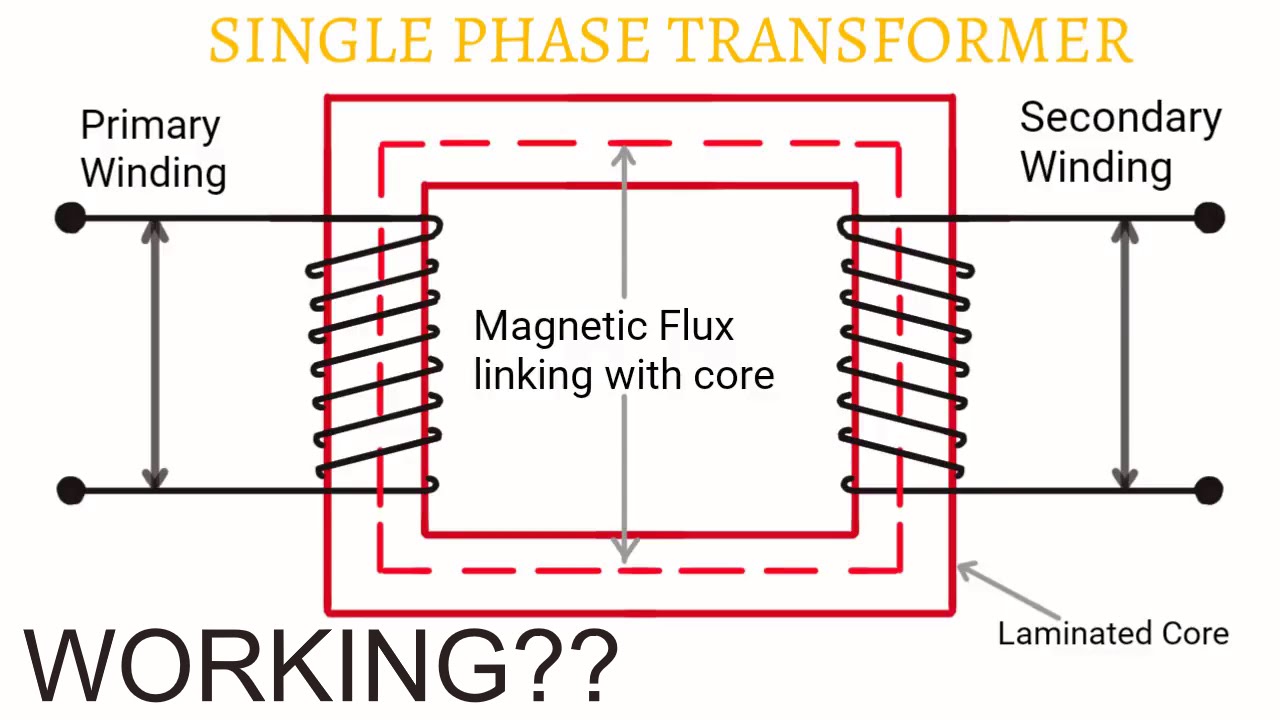The reason for transforming the voltage to a higher level is that higher distribution voltages, lower currents for the same power and therefore lower I2R losses.at the end of the transmission line, These higher AC transmission voltages and current are reduced to a much lower and usable voltage level where we can use as a supply for electrical equipment in our homes and workplaces.All this is possible only because of Voltage Transformer.
What is the transformer?
Transformers are capable of either increasing or decreasing the voltage and current levels of their supply, without modifying its frequency, or the amount of electrical power being transferred from one winding to another through the magnetic circuit.
Why We Call “Transformer”?
Because Of, It “transform” Voltage Or current From one level to another level.
Working And Construction of Single Phase Transformer
Primary Winding: The winding that takes electrical power, and produces magnetic flux when it is connected to an electrical source.
Magnetic Core: This refers to the magnetic flux produced by the primary winding. The flux passes through a low reluctance path linked with secondary winding creating a closed magnetic circuit.
Secondary Winding: The winding that provides the desired output voltage due to mutual induction in the transformer.
A single-phase voltage transformer generally consists of two electrical coils of wire, input side one called the “Primary Winding” and output side coil called the “Secondary Winding”. In a single-phase voltage transformer the primary is usually the side with the higher voltage.
The two coil windings are electrically isolated from each other but are magnetically linked through the common core allowing electrical power to be transferred from one coil to the other. When an electric current passed through the primary winding, a magnetic field is developed which induces a voltage into the secondary winding as shown.
A single-phase transformer can operate either increase or decrease the voltage applied to the primary winding. When a transformer is used to “increase” the voltage on its secondary winding with respect to the primary, it is called a Step-up transformer. When it is used to “decrease” the voltage on the secondary winding with respect to the primary it is called a Step-down transformer.
However, a third condition exists in which a transformer produces the same voltage on its secondary as is applied to its primary winding. In other words, its output is identical with respect to voltage, current and power transferred. This type of transformer is called an “Impedance Transformer” and is mainly used for impedance matching or the isolation of adjoining electrical circuits.
The difference in voltage between the primary and the secondary windings is achieved by changing the number of coils turns in the primary winding ( NP ) compared to the number of coils turns on the secondary winding ( NS ).
So this is all about single phase transformer.



